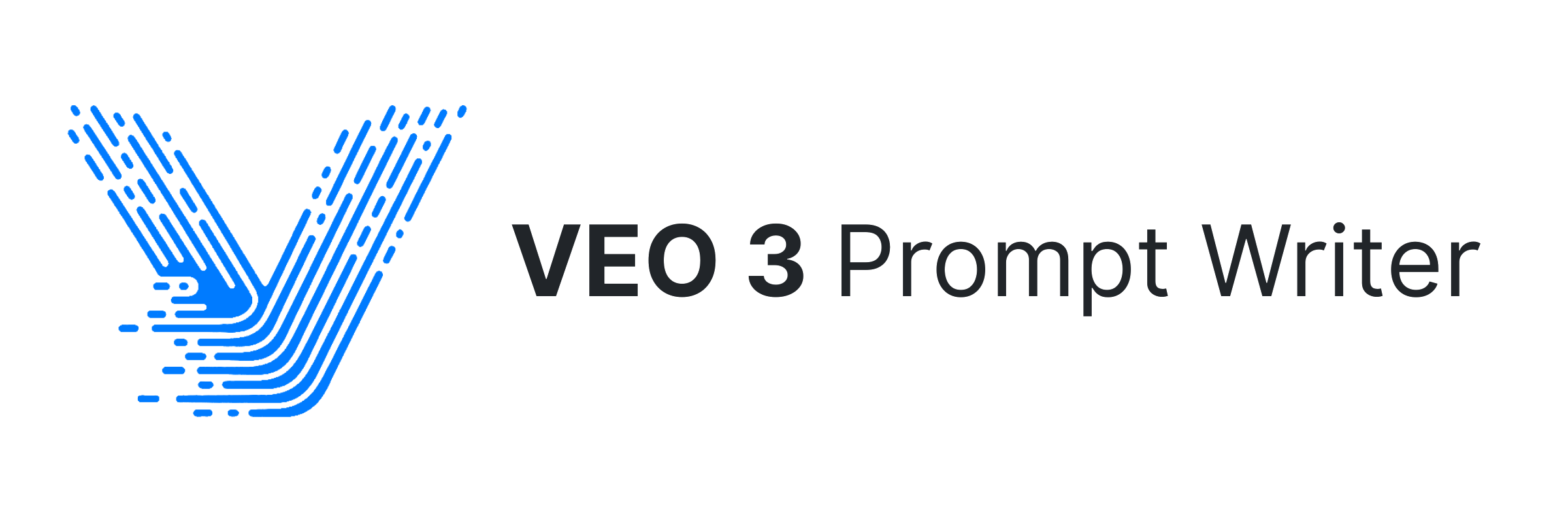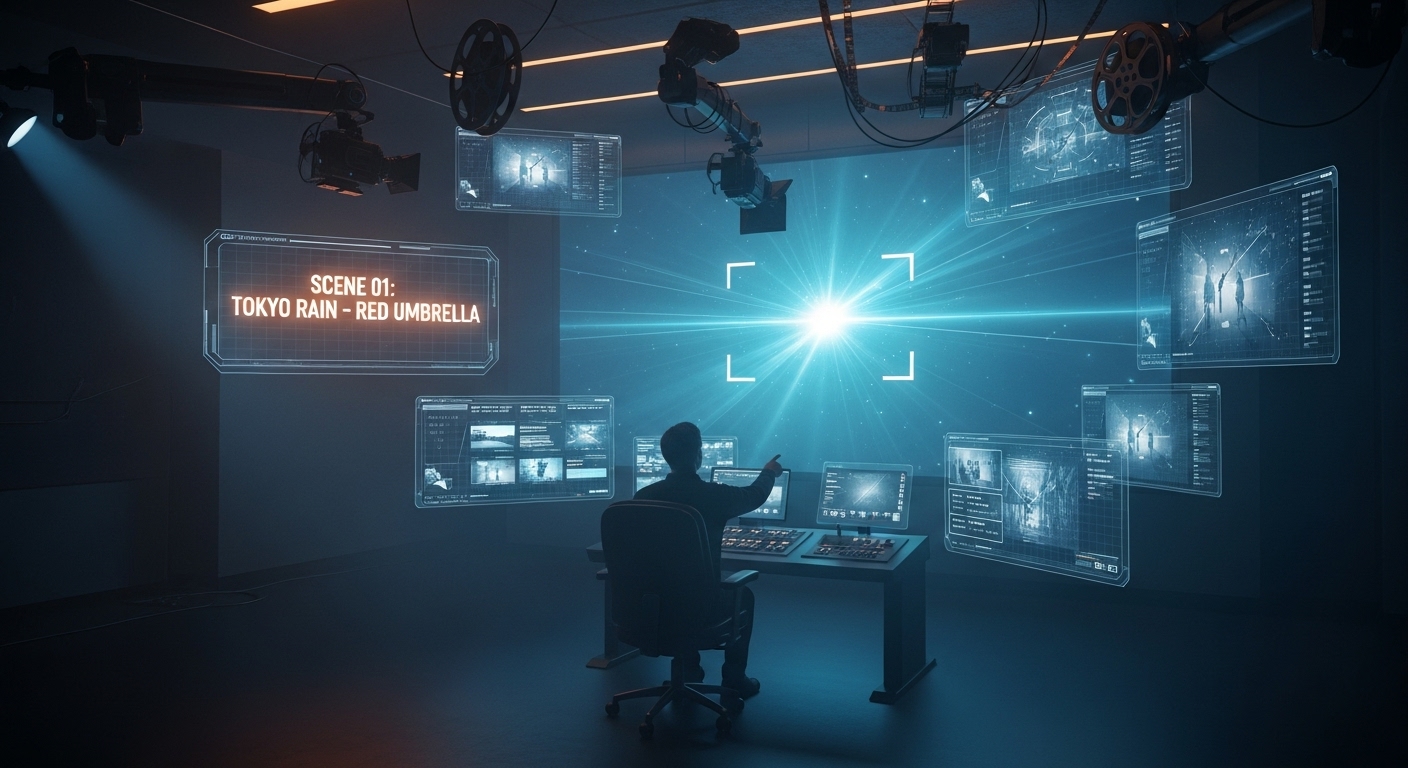You’ve seen the stunning, cinematic clips Google’s new AI video model, Veo 3, can create. But when you try it, your masterpiece looks more like a mistake. The characters are wooden, the camera is pointing anywhere but where you want, and the video completely misses the vision in your head.
Let’s be clear: the problem isn’t the AI. It’s your prompt.
Think of your prompt as the script, the director, the cinematographer, and the sound designer all rolled into one. A lazy, vague prompt gives Veo 3 nothing to work with, forcing it to guess. But a well-crafted, detailed prompt is like handing a professional film crew a perfect blueprint. The result? A video that looks—and sounds—like it was made by a pro studio.
This guide is your cheat sheet for writing prompts that get Veo 3 to create the video you actually want. We’ll break down the exact structure and elements you need to go from confusing outputs to cinematic masterpieces.
The Anatomy of a Perfect Veo 3 Prompt
The key to unlocking Veo 3’s power is structure. Instead of throwing a jumble of ideas at the AI, you need to break your vision down into clear, distinct categories. The most successful prompts methodically describe every layer of the scene.
1. The Subject: Who or What is the Star?
This is the core of your video—the main person, creature, or object you want to focus on. Be specific. Don’t just say “a man.” Describe him.
- Basic: “A man”
- Better: “A weathered, old fisherman with a kind smile and a worn-out beanie”
2. The Context: Where is This Happening?
Ground your subject in a specific environment. The context establishes the setting and heavily influences the mood.
- Basic: “in a forest”
- Better: “in a serene, misty morning in a redwood forest”
3. The Action: What is the Subject Doing?
This is where you bring your scene to life. Use strong, evocative verbs to describe the movement and actions.
- Basic: “The robot is working”
- Better: “The robot meticulously assembles a complex device with delicate precision”
4. The Visual Style: What Should it Look and Feel Like?
Define the overall aesthetic. Veo 3 excels at a wide range of visual and cinematic styles, so be explicit.
- Examples: “Cinematic, film noir style,” “hyperrealistic nature documentary style,” “Studio Ghibli anime style,” “vibrant claymation,” “surrealism”
5. Camera and Composition: How is it Filmed?
This is where you take on the role of director. Google has confirmed Veo 3’s sophisticated understanding of cinematic language. Don’t leave the camera work to chance.
- Camera Movement: Use terms like “slow dolly in,” “tracking shot,” “pan right,” “crane shot,” “handheld shaky camera,” or “aerial drone shot.”
- Composition & Framing: Specify the shot type, such as “close-up shot,” “extreme wide shot,” “over-the-shoulder perspective,” or “low-angle shot.”
6. Ambiance and Lighting: What’s the Mood?
Lighting is everything when it comes to mood. Describe the color palette and the quality of the light to shape the emotional impact of your scene.
- Examples: “Warm, golden hour sunlight,” “eerie green neon glow,” “harsh single-source lighting creating strong shadows (chiaroscuro),” “a desaturated, cool blue color palette”
7. Audio: What Do We Hear?
Veo 3’s standout feature is its ability to generate synchronized audio natively. You must prompt for it.
- Music: Describe the genre, mood, and tempo (e.g., “low-key jazz,” “an epic orchestral score building to a crescendo”).
- Sound Effects (SFX): Detail the ambient sounds (e.g., “leaves crunching underfoot,” “distant city sirens,” “tires screeching loudly”).
- Dialogue: For specific speech, put it in quotes. Example:
A man whispers, "This must be the key."
From Basic to Pro: A Prompting Example
Let’s see how these elements come together to transform a weak prompt into a powerful one.
Basic Prompt:
“A man running through a forest with music.”
Pro-Level Prompt:
A determined man in his late 20s wearing trail running shoes (Subject) sprints through a foggy redwood forest at sunrise (Context/Action). The lighting is dramatic, with golden sun rays piercing through the thick fog (Ambiance/Lighting). The camera is a low-angle tracking shot following him from behind (Camera/Composition). Audio includes the muffled sound of leaves crunching underfoot and the man's heavy, rhythmic breathing. A dramatic, suspenseful orchestral score builds throughout the scene (Audio). The style is cinematic and hyperrealistic, shot on 35mm film (Style).The Iterative Prompting Loop: A Realistic Workflow
One of the biggest mistakes beginners make is expecting the perfect video from the very first prompt. The reality is that prompt writing is an iterative process. Think of it less like a command and more like a conversation.
This workflow is standard for all high-end generative models, including Veo 3:
- Start Simple: Begin with the core elements: Subject, Context, and Action. Generate a clip to see how Veo 3 interprets your basic idea.
- Analyze and Refine: Look at the result. Is the character right? Is the setting what you imagined? Now, refine your initial prompt with more detail.
- Layer in Cinematics and Audio: Once the core scene is solid, start adding layers. In your next prompt, introduce specific camera movements, lighting, and sound effects to build the full experience.
This “generate -> tweak -> regenerate” loop is the key to refining your idea and guiding the AI to your exact vision.
Harnessing Veo 3’s Unique Features
While the fundamentals of prompting apply, Veo 3 has specific capabilities announced by Google that you should leverage.
Native Audio Generation
This is Veo 3’s biggest advantage over many competitors. It doesn’t just add a generic soundtrack; it creates audio that is synchronized with the on-screen action. Be explicit in your prompt about dialogue, ambient noise, and specific sound effects to make full use of this feature.
Creating Narratives with Character Consistency
You can string prompts together to create a longer narrative. To do this, you must maintain consistency by re-describing your characters and scenes in detail for each new shot, as the AI does not have memory between generations.
- Example Shot 1:
Extreme wide shot of a futuristic, neon-lit city at night, rain pouring down. Cinematic, Blade Runner style. The sound of heavy rain and distant sirens. - Example Shot 2:
A tall detective with a noticeable scar above his left eye, wearing a rumpled beige trench coat, looks out a window from his high-rise apartment at the neon-lit city below.
Starting from an Image
Veo can create a video based on an initial input image. This is perfect for animating a character you’ve already generated or bringing a static scene to life.
- Prompt Structure:
Using the [provided image], animate the scene. A gentle breeze rustles the leaves on the trees, and clouds drift slowly across the sky. The sound of birds chirping softly.
Advanced Strategies Grounded in Prompt Engineering
These techniques are best practices in prompt engineering that are highly relevant for a sophisticated model like Veo 3.
Mastering Style Modifiers
Go beyond simple style tags. You can combine different modifiers to create a truly unique aesthetic.
- Blend Artists and Styles: “A portrait of a knight in the style of Rembrandt, but rendered as a 3D Pixar character.”
- Reference Film Stock: Add phrases like “shot on 35mm Kodak Vision3 film” or “a grainy 16mm film look” for a specific texture.
- Specify Aesthetics: Use phrases like “1990s home video aesthetic, VHS static,” “Wes Anderson style with perfect symmetry and pastel colors,” or “gritty black-and-white noir film.”
The Art of the Negative Prompt
Telling an AI what not to do can be tricky. Models often focus on the subjects you mention, even if you negate them. The expert approach is positive reframing.
- Instead of: “A forest path with no people.”
- Try: “A remote, untouched, pristine forest path, a serene and empty wilderness devoid of any human presence.”
- Instead of: “A beautiful landscape, no buildings.”
- Try: “A vast, unspoiled natural landscape showing only mountains, rivers, and forests.”
Your New Workflow for Success
Stop expecting perfect results from lazy, one-sentence prompts. Veo 3 is a powerful instrument that requires a thoughtful approach.
- Plan it Out: Before you start generating, break your idea down using the core elements. For a story, plan your shot sequence and audio cues.
- Write and Refine: Use a text editor to write and polish your full prompt. This helps you catch errors and refine your language before generating.
- Test and Iterate: Your first prompt is a starting point. Analyze the output, see what worked and what didn’t, and adjust your prompt in a loop until you nail your vision.
The era of AI video is here, and the barrier to creating professional-looking content has never been lower. By moving from simple requests to detailed, structured “blueprints,” you can stop guessing and start directing. Give Veo 3 the clear, specific instructions it needs, and you’ll be amazed at what you can create.

